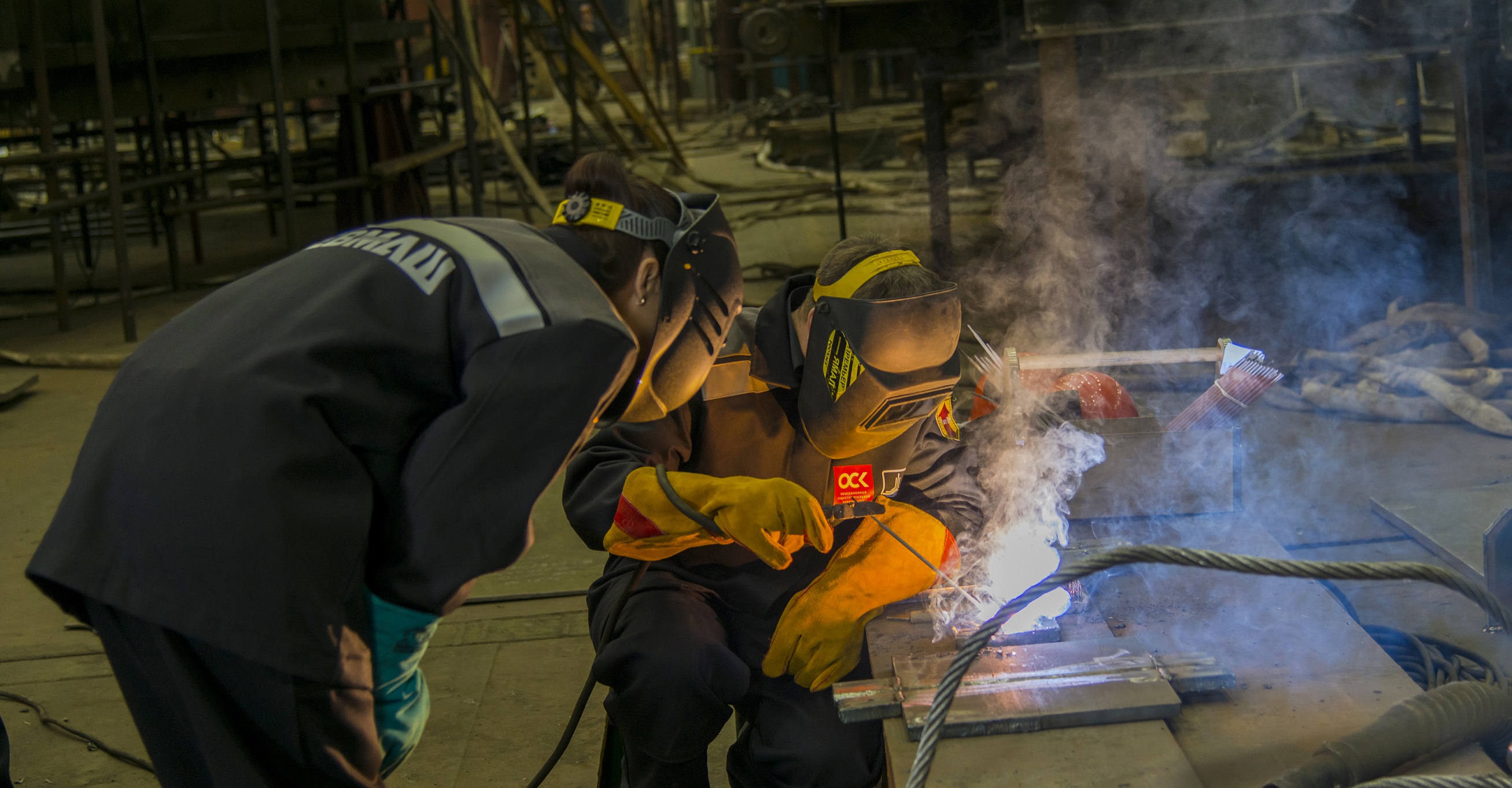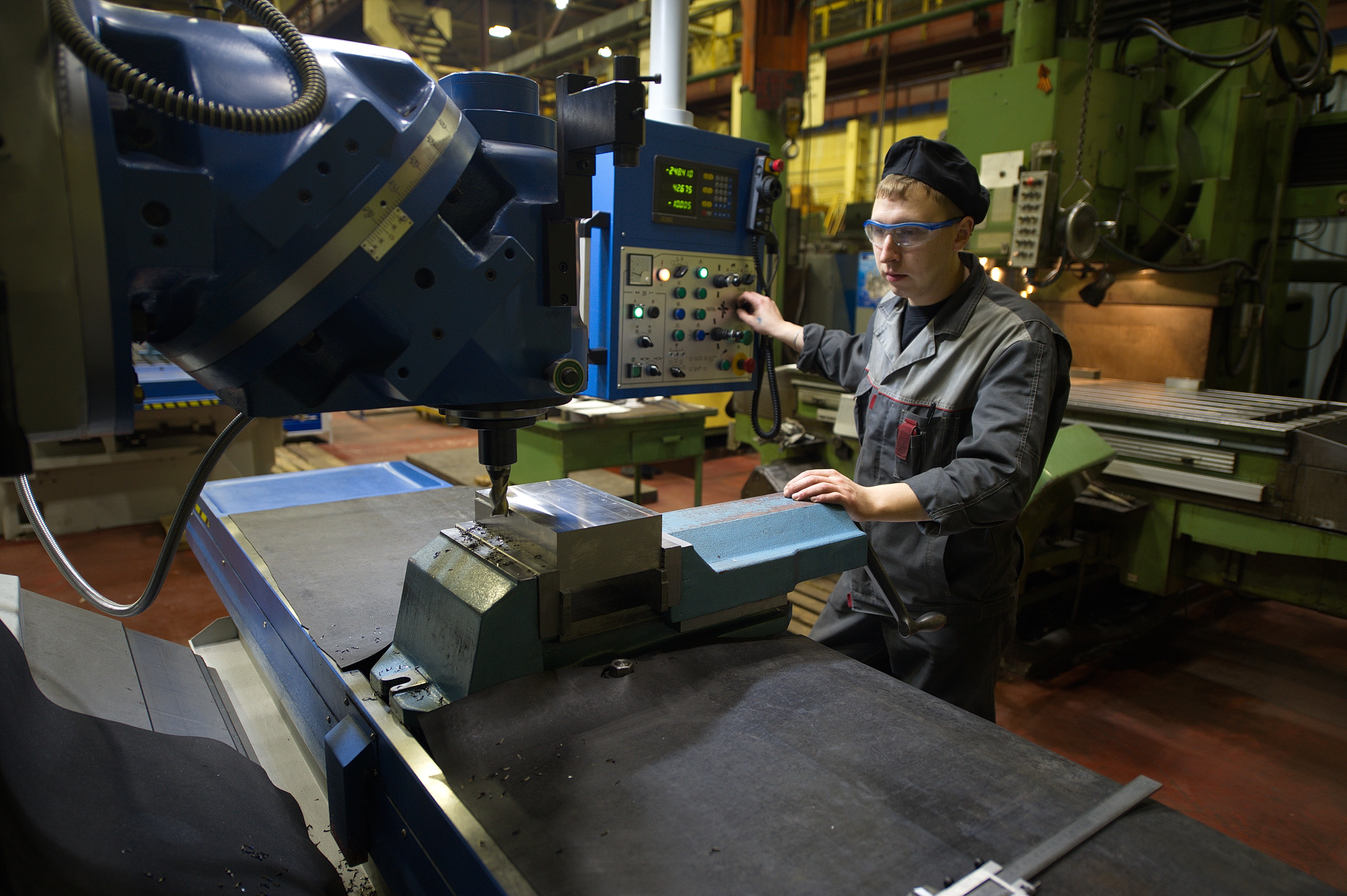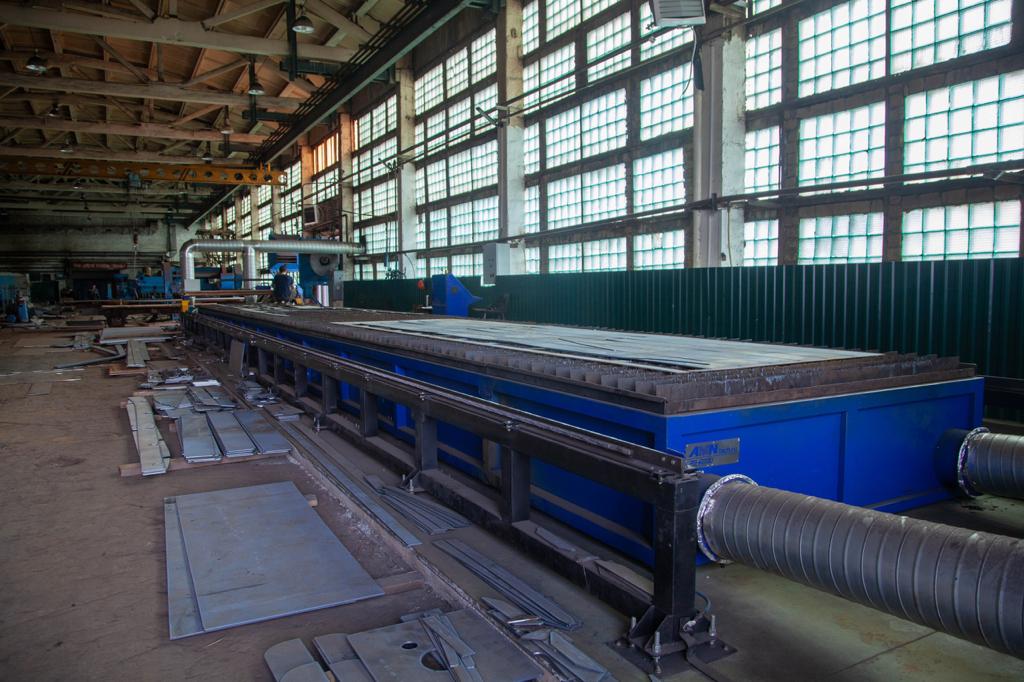
Despite the economic turbulence, Russian shipyards are loaded with orders. Their implementation, along with other problems, is complicated due to the lack of qualified personnel. In 2022, the number of new vacancies posted by shipbuilding companies rose by 26%, year-on-year. It is impossible to change the situation by the efforts of the business alone because the system professional educational institutions and educational programmes of universities should be revived and the updated as well.
According to HeadHunter analysts, the shipbuilding industry companies posted over 20 thousand vacancies of various specializations in 2022, 26% more than in the previous year. The least of regions requiring new personnel for its shipyards was headed by Saint-Petersburg accounting for each fifth vacancy (20%, or over 1.1 thousand vacancies). It is followed by Udmurtia (10% of all the total number in the country), with the Primorsky Territory closing the top three (7%).
The median wage in this segment is RUB 80,670. Over the year, it grew by 24%, or RUB 15,600.
Amid the deficit
The shortage of personnel is the long-standing problem of Russian shipbuilding and it aggravated last year: there are orders but there is shortage of human resources. Both large and small shipyards are in this situation.
The shortage of personnel is caused by the growth of production and high loading of the facilities. And it has certain regional specifics. Saint-Petersburg feature tremendous competition for human resources. The companies try to offer better conditions. At the same time, there are not as many blue-collar workers in St. Petersburg as in other regions, so apart from competitive wages and a social package the shipyards offer training in their training centers to obtain the desired profession,” United Shipbuilding Corporation told PortNews IAA.

To ensure more efficient use of staff, USC is conducting the balancing work via its Resource Center: between 2020 and 2022 the USC Resource Center moved over 4.5 thousand employees. USC estimates the economic effect from this approach at RUB 120 million.
“Admiralteiskie Verfi” and “Severnaya Verf” shipyards, Ship Repair Center “Zvezdochka” and Northern Production Association “Arktika” experience the highest need for personnel, mostly pipefitters, arc welders, assemblers and fitters. According to USC head Aleksey Rakhmanov, USC estimates the annual need for engineers at 1,150 people up to 2025.
The similar situation is at the shipyards not included in USC. “In 2022, the company signed contracts for construction of passenger ships and a dredger with other shipbuilding projects under consideration. In this situation, the demand for specialized personnel has increased,” commented the press center of the Samara based Nefteflot CJSC adding that the shipyard is in acute need of engineers, technicians and qualified workers specializing in shipbuilding: welders, assemblers, turners, mechanics.
The priority of Onezhsky Shipbuilding and Ship Repair Plant for 2023 is to fill vacancies for the main production personnel (electric welders, assemblers of metal ship hulls, pipeliners). Just like at other shipyards, the need for engineering and design personnel is acute here. Kaliningrad based plant Pregol tell about similar problems. Today, they need various engineers, project managers, as well as highly qualified workers.
Bring a friend
It should be recognized that difficulties with hiring personnel are typical for the entire Russian industry. Therefore, there is a competition not only between shipbuilding companies, but also between the industries.
According to the Bank of Russia’s survey, almost half of the country's enterprises reported problems with hiring in December 2022. In February 2021, one third of enterprises experienced such problem. The main reasons are the insufficient level of competencies and wage growth due to competition between employers. Amid the increased demand at defense enterprises, where more favorable conditions are often offered (including for fitters and welders), there was an outflow of labor resources from the shipyards in the civil segment.
In the current situation, larger shipyards, can offer additional measures of financial support and incentives, apart from wages. For example, at some USC enterprises (Severnaya Verf, Baltiysky Zavod, SPO Arktika), referral programs are being implemented as a tool for attracting personnel: a new employee gets a job at the plant under the patronage of one of the employees. The USC press service said that the "Bring a Friend" campaign has been in practice at Baltic Shipyard for more than five years. A similar practice was also applied by Arktika SPO last year.
At the same time, not all small shipyards surveyed by PortNews are ready to offer either additional financial support or competitive wages. Such enterprises put more emphasis on contacts with local educational institutions and regional authorities.
.jpg)
Automation is not a silver bullet
In global practice, the shortage of personnel at enterprises is often solved in two ways – attraction of labor migrants or automation of production. As for migrants, Russian shipyards are not yet ready for en masse involvement of such employees. The preference is given to people with required education and experience. However, the Bank of Russia found out that the inflow of highly qualified foreign specialists into the country in 2022 fell by 29%, year-on-year.
As for the automation of production processes, it must be understood that this is quite a long and investment-intensive process while the orders need to be implemented today. Meanwhile, most shipyards have started or are planning modernization of their production facilities.
In particular, USC has installed automated cutting and welding lines at its Admiralteiskie Verfi shipyard, at the branch of Shipbuilding Center Zvezdochka - Krasnaya Kuznitsa, at Krasnoye Sormovo shipyard. USC says St. Petersburg Marine Technical University is developing a hybrid laser-arc welding technology with a plan to launch it at Baltiysky Zavod in 2023. Then it is to be expanded to other shipyards. The university offers two programmes of vocational training focused on these technologies, both for workers and for mid-level specialists.
Onezhsky Shipyard is currently implementing a project for a deep modernization of production, which foresees the introduction of automated sections with CNC equipment, the digitalization of production processes, and the installation of industrial robots, particularly in welding operations for the manufacture of sections, micro-panels and foundations for ships under construction.
“At the same time, each ship is a unique, one-of-a-kind product. Therefore engineers, designers and many working professions will be in demand in shipbuilding for a long time,” believes Onezhsky Shipyard.
The introduction of automated lines at shipbuilding enterprises largely depends on the availability of serial products offered by an enterprise or its workshops, the USC explains. Besides, the use of such automated lines for welding of hull sections and units or the use of CNC machines for small-scale production of parts is always associated with additional training of specialists and their certification for certain works.
Hunting for students

Attraction of young specialists, former students, is a challenge for many shipyards in the regions with no educational institutions training the required personnel. In the Rostov region, where three seaports are located – Rostov-on-Don, Azov and Taganrog, they started training specialists for shipbuilding and ship repair only in 2022. A resource center was first opened at the premises of the Don State Technical University, and then a faculty of shipbuilding and marine technology appeared there. It is to prepare personnel for the region’s ship repair companies such as Azov Shipyard JSC, RIF JSC, Moryak JSC.
“Many vocational schools that trained workers were closed over the previous decades. Today, many professionals are people well over 50 years old. Absence of specialized educational institutions and no training of specialists needed for shipbuilding is one of the main causes of the shortage of both engineering personnel and blue-collars,” said Nefteflot CJSC. In such conditions, the enterprise has to attract specialized graduates from other regions of Russia. Assistance with relocation is offered as well as the payment for accommodation. Besides, the company plans to create its own training center.
Many shipyards sign cooperation agreements with educational institutions, including those located in other regions. Thus, Petrozavodsk based Onezhsky Shipyard cooperates with Petrozavodsk Industrial College, where training is provided for “Shipbuilder and Ship Repairer of Metal Vessels” specialization, with St. Petersburg State Maritime Technical University and Siberian State University of Water Transport (SGUVT).
“Over the recent years, 13 SGUVT students have successfully completed an internship at the enterprise, three of them work at the plant,” said the shipyard representatives.
In the Arkhangelsk region, where Sevmash (a company of USC) is located, there is a Technical School of Shipbuilding and Mechanical Engineering. However, according to the Arkhangelsk Region Governor Alexander Tsybulsky, the educational institution needs modernization including the purchase of high-tech machine tools, the creation of specialized classrooms, and the repair of buildings. The local authorities estimated all these problems at more than RUB 500 million.
In order to provide its shipyards with engineers, USC annually accepts more than three thousand students for practical training. RUB 30 thousand, depending on output).
In St. Petersburg and the Kaliningrad region, shipbuilding enterprises were included in the federal project "Professionality". This programme is aimed at preparing graduates for a specific place. Starting from the second year of study, the students sign tripartite contracts for the targeted training with mutual obligations of the parties on mastering the skills and employment.
In addition, some shipyards are ready to hire people without special skills and knowledge and train them on their own, which again requires additional company resources.
Obviously, the selection of qualified personnel will always be a topical issue for shipbuilders. In domestic and international practice, there are many tools for solving it. However, they can be effective only with the joint efforts of the business, regional and federal authorities, especially in terms of education. The efforts and resources of shipbuilders in solving personnel issues are definitely not sufficient.
More industry-related content is available on our social media pages: YouTube, Telegram, Yandex Zen




